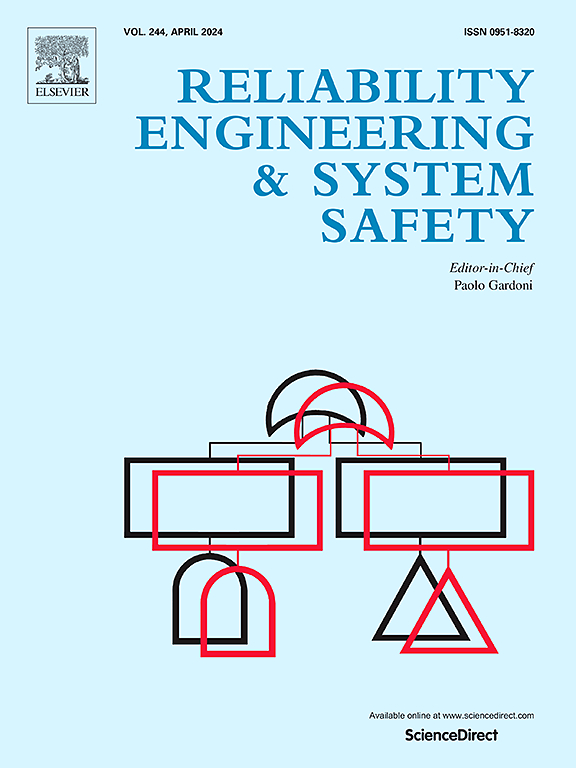Probabilistic modeling of explosibility of low reactivity dusts
IF 9.4
1区 工程技术
Q1 ENGINEERING, INDUSTRIAL
引用次数: 0
Abstract
This work presents probabilistic models to estimate dust explosion severity parameters of low reactivity dusts while capturing uncertainty in the parameter estimations. The marginally explosible behavior of combustible dusts has also been explored for different ignition energies and dust concentrations. Low-reactivity dusts are mostly characterized by low-KSt values (i.e., KSt < 45 bar.m/s in the 20-L chamber), also referred to as marginally explosible. These dusts pose a major problem regarding explosion classification due to the uncertainty they present on the industrial scale (i.e., explodes in the 20-L chamber but not in the 1-m3 chamber, and vice versa). The proposed model has been used to study the explosibility of carbon black and zinc dust samples based on data generated in a 20-L Siwek chamber. The outcomes in terms of variability of maximum explosion pressure and maximum rate of pressure rise have been represented using maximum probable values and credible ranges. The likelihood of selected dusts exhibiting marginal explosibility characteristics at varying concentrations and ignition energies is also presented. The findings can be useful for making dust explosion safety decisions and facilitating risk reduction opportunities in the processing and handling of explosible dust.

求助全文
约1分钟内获得全文
求助全文
来源期刊

Reliability Engineering & System Safety
管理科学-工程:工业
CiteScore
15.20
自引率
39.50%
发文量
621
审稿时长
67 days
期刊介绍:
Elsevier publishes Reliability Engineering & System Safety in association with the European Safety and Reliability Association and the Safety Engineering and Risk Analysis Division. The international journal is devoted to developing and applying methods to enhance the safety and reliability of complex technological systems, like nuclear power plants, chemical plants, hazardous waste facilities, space systems, offshore and maritime systems, transportation systems, constructed infrastructure, and manufacturing plants. The journal normally publishes only articles that involve the analysis of substantive problems related to the reliability of complex systems or present techniques and/or theoretical results that have a discernable relationship to the solution of such problems. An important aim is to balance academic material and practical applications.
 求助内容:
求助内容: 应助结果提醒方式:
应助结果提醒方式:


